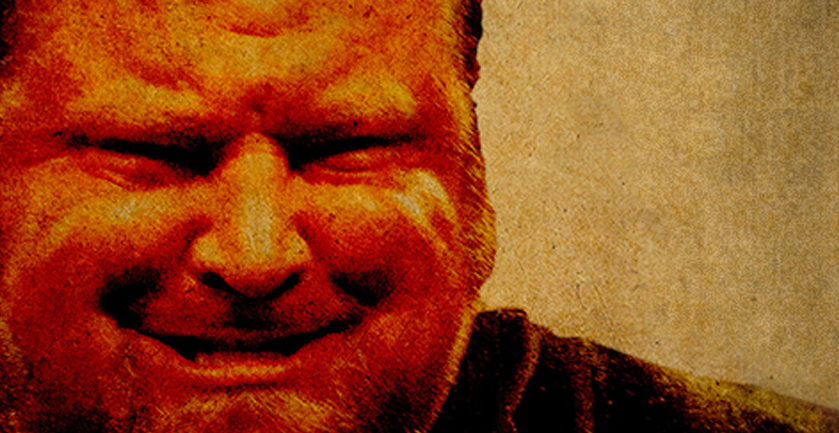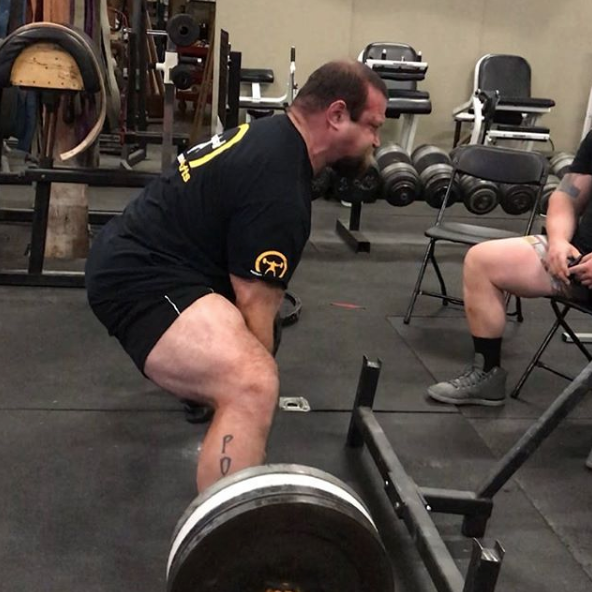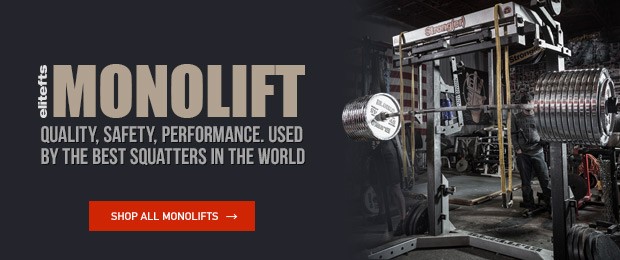
I have been in the powerlifting game a long, long time now, and I have learned so much. Even after all those years and all that knowledge, I still feel like there is so much more I need or want to learn. So I try to keep my mind open and still pay very close attention to lifters and coaches I respect. This old dog can and does still learn some new tricks. One of these new tricks has to do with low back arching in the squat and deadlift.
When I got serious about powerlifting and took my first seminar, the popular thing was to arch the low back in the squat and the deadlift. It made sense to me and ended up being how I coached for many years. Even with my background in physical therapy and having actually taught people about neutral low back, in powerlifting the arch just made more sense to me. It felt like a stronger position where I could really flex my back to lock that position in. I also felt that being in the arched position gave me much better leverages. If you watch older powerlifting videos, and actually even still a lot today, you can hear people yelling to arch, arch tight, arch big, etc. Lots of huge lifts were performed with tight low back arches. I did this through my biggest years of lifting.
Over the past couple years I began to hear more and more about neutral back in powerlifting. Some of this talk happened to be from lifters I really respect, which forced me to give it even more thought. It was over a year ago that I took a trip up to Portland to hang out with Chris Duffin for a few days. This is the first time I really got to talk one-on-one about this with one of those people I really respect. Needless to say, I am very hardheaded and having accomplished some of the best lifts of all time with a tight arched low back, it was going to take some serious convincing to actually give this a dedicated try. After some time I eventually told Chris “F*&$ you!” This was immediately followed with something like, “Okay, you actually convinced me to try this!”
Now, being who I am and being so hardheaded, “try this” is probably not what most people think. It did not mean I would try it one or two times to see if I saw improvements. I knew a change like this would take lots of time to adjust to. I have over 15 years squeezing the hell out of my low back, so my CNS has developed some serious neuro-habits to lift like that. These pathways do not change so easily. If I was going to “try this,” it meant I was going to have to give this a lot of time and some serious dedication. By this point, I had said I was going to do it, so the decision had been made and it was the time for action.
I can’t say I remember everything Chris talked about in order to finally convince me that I should start using a neutral back, but anyone that knows Chris probably knows that you can experience shock and awe in response to his knowledge. I believe there were times I actually had to stop talking in order to try to register all the information coming into my head and sort it out. Of course, my blue-collar mind had to register it into my own thoughts.
I think the biggest thing that got me thinking was how Chris explained the structure of the human core and spine. I had always looked at the low back arch as a cross between the strongest structure in architecture and an archery bow. I still say the arched low back is a very strong position, but Chris had me questioning if it was as strong as the neutral position. This had to do a lot with how the discs and vertebrae stack based on pulling them in an arch or pulling them all down onto each other in their natural position. It also had a lot to do with the scissoring of the pelvis and ribs when getting into an arched position versus a neutral position.
The arch is basically opening up the scissors and therefore opening up one side of the core with no actual hard or solid structure, in my mind leaving more room for bad shit to happen. In fact, this was one of the big thoughts I had about why this may be a better position. When someone does lose their arch (which happens often in beginner and intermediate level lifters) there is a long movement that happens from the arched to the hunched position. This long movement generates a lot of force, especially with weight on the back or in the hands. All this force impacts the low back in a very negative way. In the neutral position, even if you do end up letting your core relax, the movement or loss of position in the low back is not as hard as from in the arched position. As Chris kept explaining, I also realized the core is much more effective in the neutral position. As the ribs are brought down to the pelvic floor, the diaphragm, abdominals, and obliques become more effective at bracing the midsection. This also increases the ability to generate pressure. With all that Chris had talked about, these were some of the key things that I decided were enough reason to give this a try.
MORE: Using Your Body's Mobility and Stability Mechanisms to Drive Performance
I am not going to say this change was easy because it was not. It took so much mental determination and energy that it was exhausting in the beginning, even without lifting heavy. I also did not immediately lift more, but I knew this would be the case. The body does not accept a change like this very easily, and mentally it feels extremely uncomfortable at first. So much energy is used up just trying to not let your body revert back to what it already knows. Other factors were that I went to visit Chris with an injury. I had a low back issue that was on the mend.
There were some interesting things I did notice right off the bat. The first of these was how much more pressure I could generate through my core with this position. My very first thought was that it was approaching the pressure I used to generate in multi-ply gear, to the point I thought I might piss myself in the deadlift. To people that do not understand how to get this type of pressure or have never felt it, it's a great thing. It is like you're going to explode up at the bottom of a lift. Another big thing I realized is that it made my deadlift position much more efficient. This is something I always struggled with. I never had a great deadlift and never found a really strong position for my body structure that was consistent. Along with that, there were nagging hip issues that never let me pull without pain.
One other big thing I noticed right off the bat was that my low back felt better when I was able to find that neutral position and really lock it in. So there were quickly more reasons to keep dedicated and give this a real effort.
Now, I wish I could say over the last year or so that my lifts shot up with this new technique and that I could give some crazy numbers to prove it worked. I can’t do that, but it has nothing to do with this new technique. This year has been crazy for me, filled with a ton of personal growth, injuries, and life changes. My training has been very inconsistent at best. My biggest and most important focus has been dealing with my sleep and depression head-on, with the same determination I achieved everything I did in powerlifting. This meant backing down heavy training to see the effect on these issues and trying to let my whole body heal.
This also meant dropping a great deal of bodyweight, down over 100 pounds from my all-time high. This has had a major effect on my leverages and strength. I have been working on some low back issues, had a groin pull, and even cracked a rib or two. Through all this, I kept up training, but it was much more focused on health than on strength. I tried higher rep bodybuilding style for a while and then into 5/3/1 (which I love and will talk about in another article). Still, the three main lifts have always been a base, and working the neutral back in the squat and deadlift has been consistent. The longer I work with it and get used to it, the more I like it and know I will continue to work with it.
Even without putting up bigger numbers over this last year, I am liking the neutral back technique. During the times where my training has been able to be more consistent, I have started to build strength back up in the squat and deadlift. I attribute a good part of this to the technique. In fact, I think my deadlift has been going better than it ever has. As I mentioned, this technique has helped give me the most efficient position in the deadlift I have ever had. It has helped make it more consistent than it ever has been and I am simply pulling better than I ever have. When I was running 5/3/1, I was consistently hitting PRs every week.
It did take me a while to really be able to lock in my core with the neutral back technique, but once I learned how it was pretty crazy. It really has an advantage over the arched position. I will admit, it has been much easier for me to learn and use in the deadlift than in the squat. I'm not really sure why this is, but I am still working it in the squat and can see the advantages.
Even though the main focus of my life right now is not on powerlifting, strength will always continue to be a part of my life. I cannot ever see a time where I will not be involved in strength sports, either competing, coaching, writing, etc. I simply love it. So continuing to learn is very important to me, and part of that is trying it for myself to best understand it. Hell, even if I am not competing I will always be lifting, and why wouldn’t I want to use the best technique and training possible? Plus, I am finding some serious enjoyment in coaching these days, and I want to be the best coach possible when I am doing it.
Having done so many big numbers in the arched position, I cannot say it is bad, and I will continue to coach it if that is what a lifter is sold on. I think if executed properly, it is still very good. I prefer to coach the neutral back now because of what I have learned and experienced in my own training. There has been plenty there to show me that it is the better of the two positions. I am so convinced of it that I am heading back up to Portland next month to attend a Kabuki Strength seminar to learn even more (I am sure I will have an upcoming article about this). So if you have not looked into the neutral back position in the squat and deadlift, I recommend looking into it. I think it can help in lifting bigger numbers and is a much safer position.












I taught myself the hard arch and never really looked into the ribs down, neutral spine queues. But with my low back giving me more and more problems (and a serious Pelvic tilt developing) I will definitely be looking into this more.
Thank you for a good read!